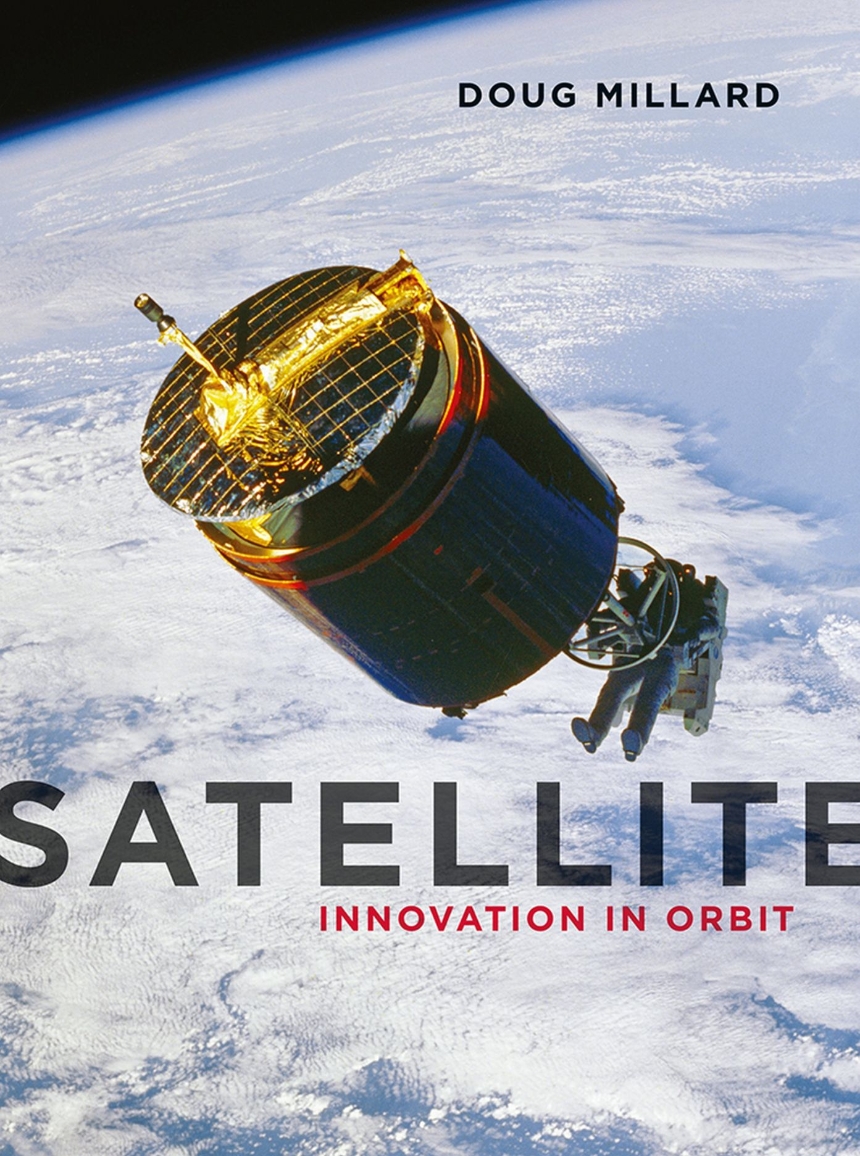Right now, above our heads—nearly imperceptible to us but hugely important to how we live—are thousands of man-made objects that we have sent into space. Ubiquitous but mysterious, satellites are the technological infrastructure of our globally connected world, helping us do everything from orient ourselves on a map to watch our favorite television shows. Yet we rarely ever think about them. In this book, Doug Millard pays overdue tribute to the stoic existence of the satellite, tracing its simultaneous pathways through the cold silence of space and the noisy turbulence of the past century.
How satellites ever came to be is, in itself, a remarkable story. Telling an astonishing history of engineering experimentation and ingenuity, Millard shows how the Cold War space race made the earliest satellites—ones like Sputnik, Telstar, and Early Bird—household names. He describes how they evolved into cultural signifiers that represented not only our scientific capabilities but our capacity for imagination, our ability to broaden the scope of our vision to the farthest reaches. From there he follows the proliferation of satellites in the second half of the twentieth century, examining their many different forms, how they evolved, all the things they do, what they have enabled, and how they have influenced our popular culture. Ultimately, Millard asks what we can still expect, what sort of space age the satellite has initiated that is yet to be fully realized.
Published in association with the Science Museum, London, this beautifully illustrated book will appeal to any fan of space exploration and technology.
How satellites ever came to be is, in itself, a remarkable story. Telling an astonishing history of engineering experimentation and ingenuity, Millard shows how the Cold War space race made the earliest satellites—ones like Sputnik, Telstar, and Early Bird—household names. He describes how they evolved into cultural signifiers that represented not only our scientific capabilities but our capacity for imagination, our ability to broaden the scope of our vision to the farthest reaches. From there he follows the proliferation of satellites in the second half of the twentieth century, examining their many different forms, how they evolved, all the things they do, what they have enabled, and how they have influenced our popular culture. Ultimately, Millard asks what we can still expect, what sort of space age the satellite has initiated that is yet to be fully realized.
Published in association with the Science Museum, London, this beautifully illustrated book will appeal to any fan of space exploration and technology.
192 pages | 50 color plates, 50 halftones | 6 x 8 1/4 | © 2017
Physical Sciences: Astronomy and Astrophysics

